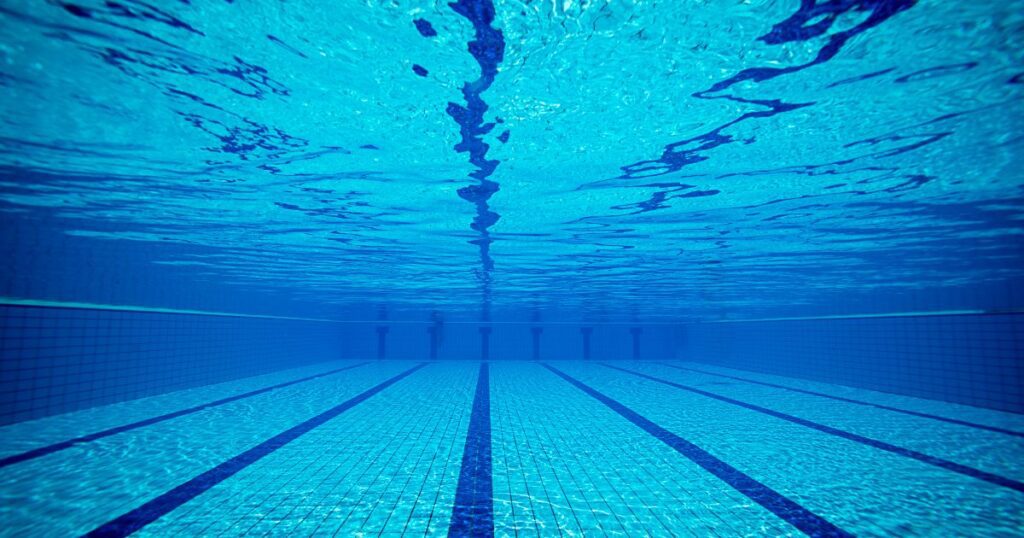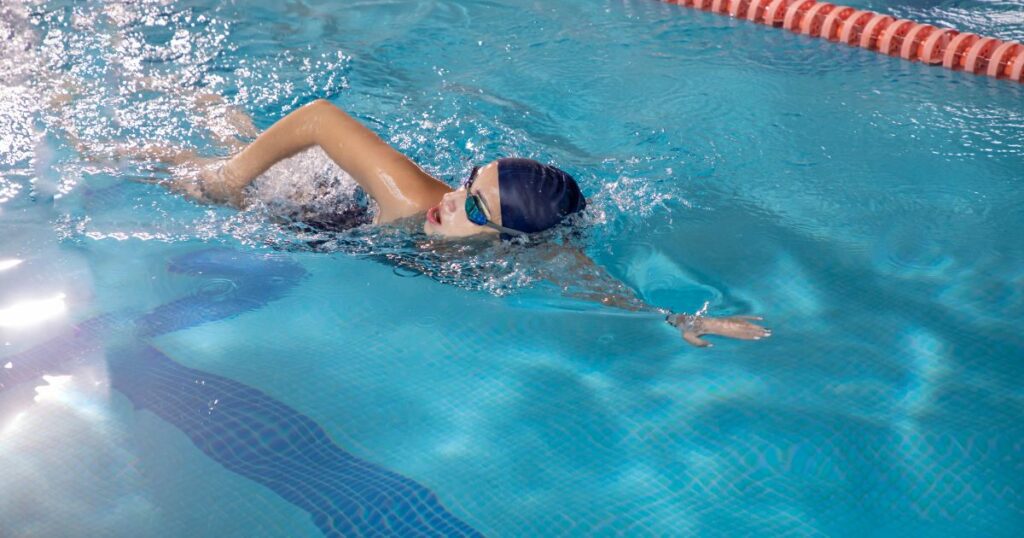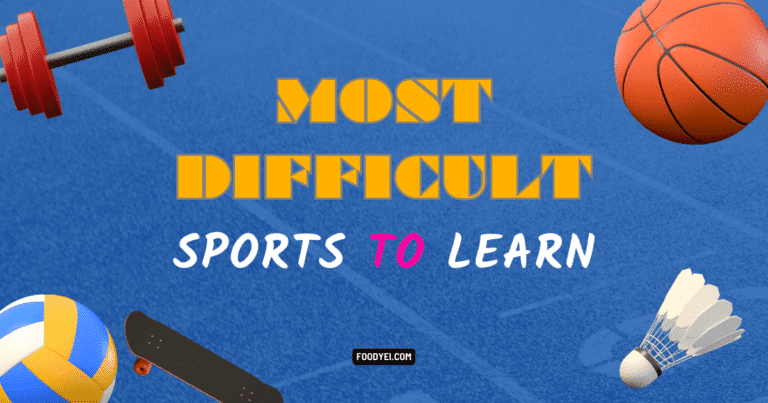Baseball may not seem to have much in common with swimming. One takes place on solid ground and the other in the water. However, swimmers and baseball players have more in common than you might think. Many of the same muscle groups are used in both sports, along with the need for mental focus, coordination, explosiveness, and endurance. Swimming for baseball players is an excellent cross-training choice to improve their on-field performance.
Swimming works groups like the arms, shoulders, legs, and core in ways that strongly reinforce baseball-related strengths. The water resistance tones these muscles and develops superior cardiovascular conditioning, unlike land-based sports. Swimming improves mobility, power, and agility for applying force. Mental concentration and breath control enhance mental toughness and focus. By training in the pool 2-3 times per week in the offseason or between games, baseball players can develop key physical and psychological attributes to excel on the diamond.
11 Benefits of Swimming for Baseball Players Are:
Building Arm and Shoulder Strength
One of the biggest benefits swimming provides baseball players is improved strength in the arms and shoulders. Throwing, hitting, and fielding all rely heavily on rotational torso power supported by the arms, shoulders, and upper back.
Increasing Core Strength
Swimming turbo charges core strength vital for baseball success. The water’s buoyancy and resistance tones the abs, obliques, lower back, and entire torso, unlike land-based training. Maintaining a streamlined horizontal body position along with the twisting crawl stroke motions engages the core significantly.

Developing Lower Body Power
Swimming serves as a great lower-body workout for baseball players. While legs don’t directly apply force in swimming for propulsion, they play key support roles. Flutter kicking engages the hamstrings, quads, glutes, hip flexors, and calves in order to stabilize the lower body position.
Improving Rotational Force
As mentioned earlier, power comes from the entire body’s rotation in many baseball movements like swinging, throwing, fielding, pitching, etc. Generating and smoothly transferring this torque relies heavily on core strength and mobility. Swimming develops extraordinary rotary strength and flexibility.
Enhancing Cardiovascular Endurance
Furthermore, swimming may provide the best cardiovascular training of any sport. Moving the whole body through water resistance elevates heart rate rapidly requiring maximal oxygen intake to maintain…

Facilitating Injury Recovery
Swimming promotes faster recovery for common baseball injuries related to arms and legs. Running and high-impact training can further agitate injuries, prolonging healing times. But swimming allows players to actively rehab most strains and pulls in a no-impact environment.
Burning Calories and Fat
Swimming burns tons of calories and boosts metabolism better than most other aerobic activities. Vigorously churning through dozens of laps torches between 400-700 calories per hour for most people. And that calorie burn continues even after getting out of the pool.
Improving Mental Focus
Moreover, like baseball, swimming demands tremendous mental focus and concentration. Tracking breathing patterns, counting laps, focusing on technique points, and maintaining pace engages the mind completely. Developing this ability to stay mentally dialed in despite physical discomfort pays dividends for baseball concentration.
Promoting Relaxation and Recovery
The hydrostatic pressure and feeling of weightlessness allow tight muscles and joints to fully relax. This facilitates faster recovery from baseball training and games. Swimming loosens up muscles and reduces tension better than almost any other form of active recovery.

Avoiding Overtraining Injuries
Mixing up baseball dry land training with pool workouts helps avoid overuse injuries. Repeat throwing, hitting, pivoting, and decelerating movements take their toll over a long season. But cross-training with swimming provides a repetitive motion break that keeps players healthy.
Conclusion:
In conclusion, swimming provides baseball players with a long list of performance and health benefits beyond traditional baseball training. As covered in this article, swimmers positively develop arm, shoulder, and core strength crucial for power-hitting and throwing. Cardiovascular conditioning also boosts endurance late into games when it matters most. Baseball players can further leverage swimming for quicker post-workout and post-game recovery while avoiding overtraining strains and injuries over a long season.
Additionally, the mental focus and breath control drills required help improve concentration skills for the diamond. Given all these advantages, every baseball player should consider incorporating swimming 2-3 days per week into their seasonal and off-season conditioning. Coaches and trainers should build swim workouts into training regimens appropriately around throwing routines and weight-lifting sessions.
FAQs About Benefits of Swimming for Baseball Players
What are the benefits of swimming for baseball players to improve strength and endurance?
Swimming provides baseball players with several benefits that can improve their strength and endurance on the field. Some of the main benefits include increased arm, shoulder, and core strength from resistance training in water. Swimming also enhances cardiovascular endurance more than most other sports due to continuously working the whole body.
How often should baseball players swim to see results?
Baseball players looking for performance benefits should aim to swim 2-3 times per week in the offseason or between games during the season. Consistently swimming 1-2 times per week can still provide maintenance. But for ideal strength and endurance improvements, at least 2-3 moderately intense sessions are best.
What are the best swimming strokes for baseball conditioning?
The front crawl stroke works the arms, shoulders, and core in very baseball-applicable ways. So focusing on freestyle laps provides great crossover development. Additionally, some backstroke training further complements those strengths while butterfly and breaststroke build complementary power. Rotating different strokes challenges various baseball-related muscle groups.
How long should a swimming workout last for baseball players?
In terms of duration, a 60-minute swimming session 2-3 times per week allows enough workload for baseball players to adapt and improve conditioning between outings. Building up to doing 45-60 minutes of mostly moderate, aerobic swimming serves most players’ needs well for maintaining arm strength, and endurance and avoiding overtraining.
Are there any risks or downsides to baseball players adding swimming training?
When beginning a swimming regimen, baseball players should gradually progress in duration and intensity over several weeks as the body adjusts to avoid overtraining. Additionally, some athletes experience shoulder discomfort from repeating certain strokes if using poor technique. Proper instruction and stroke mechanics can mitigate this, along with alternating different training focus areas.




